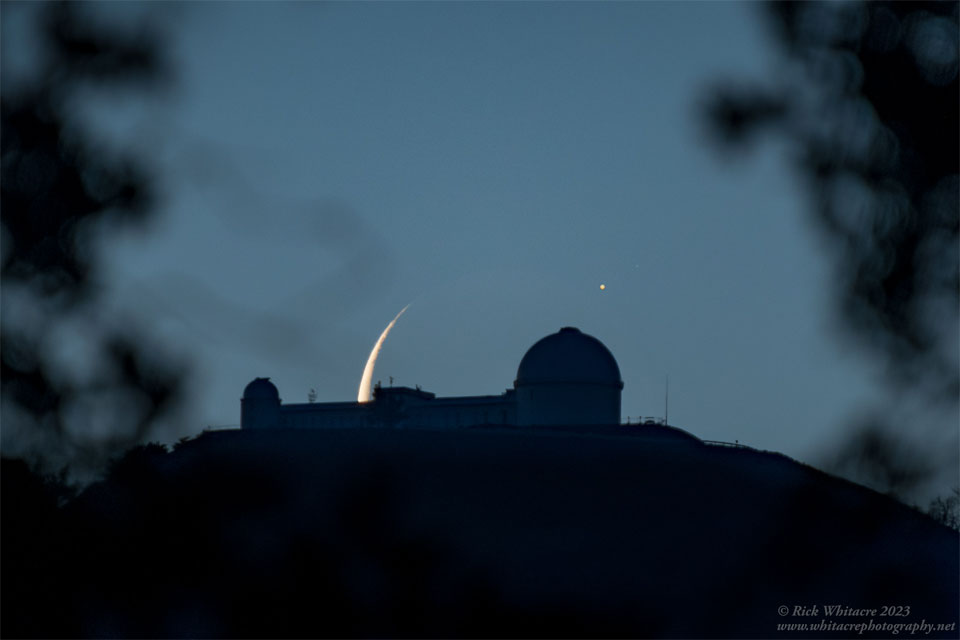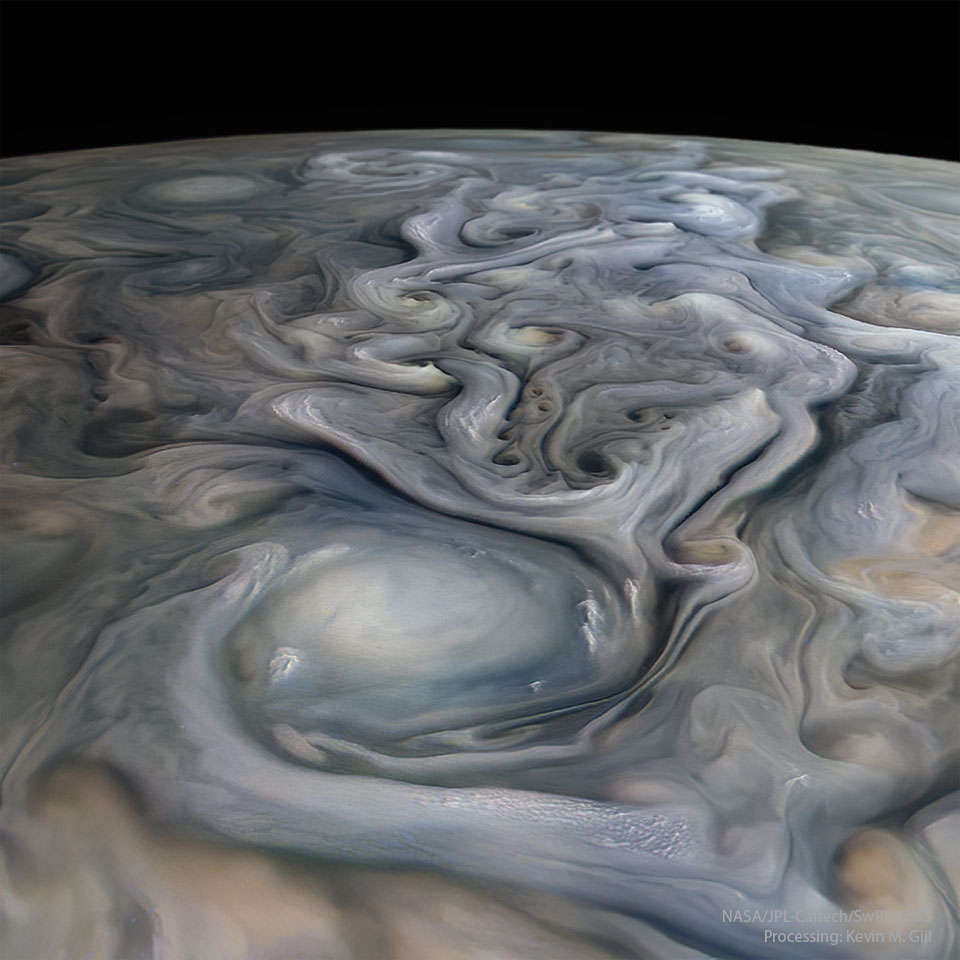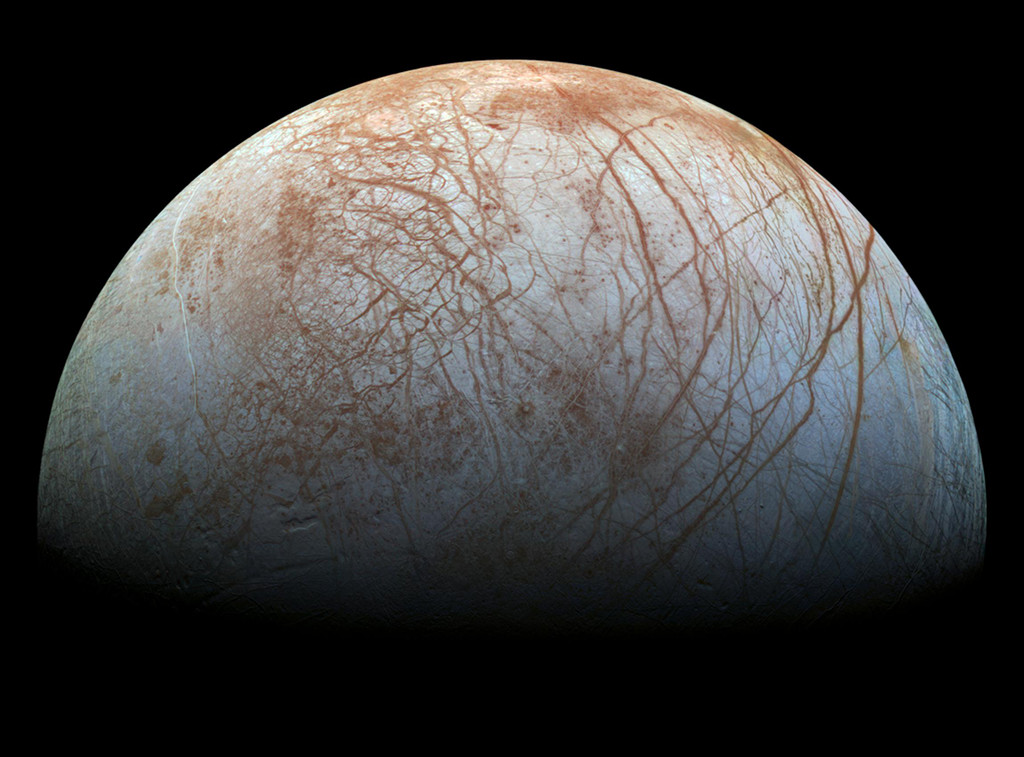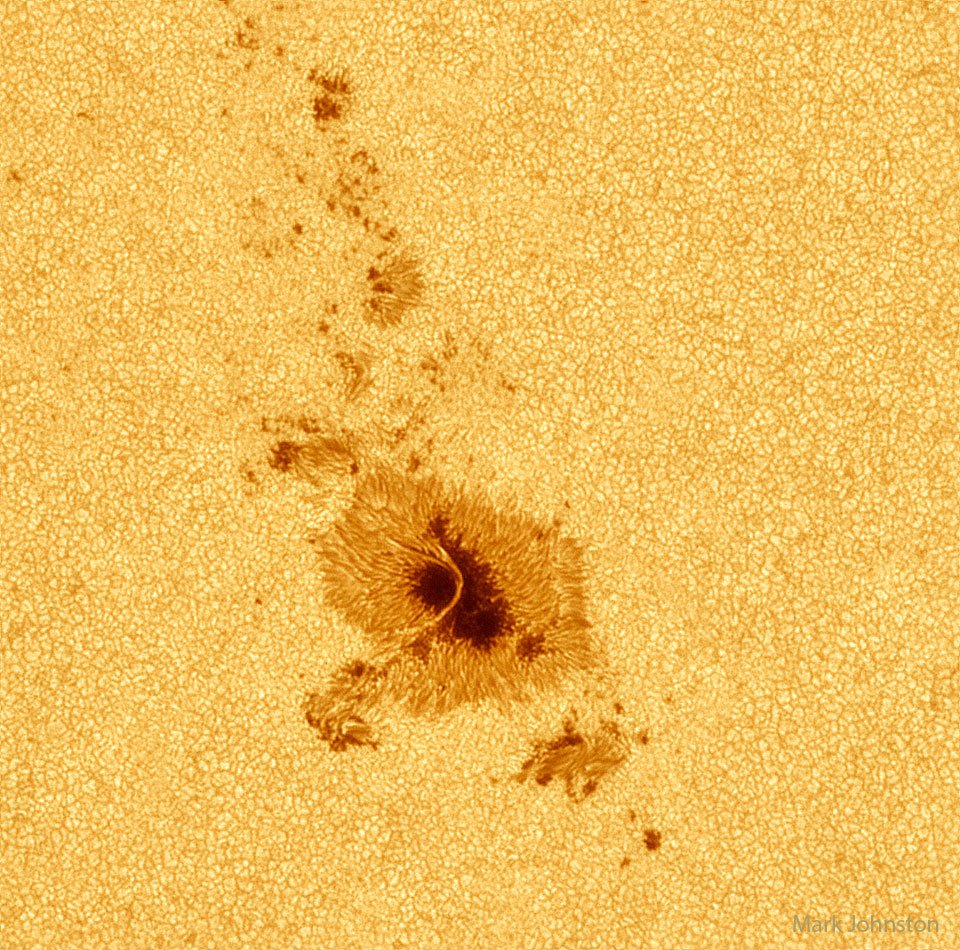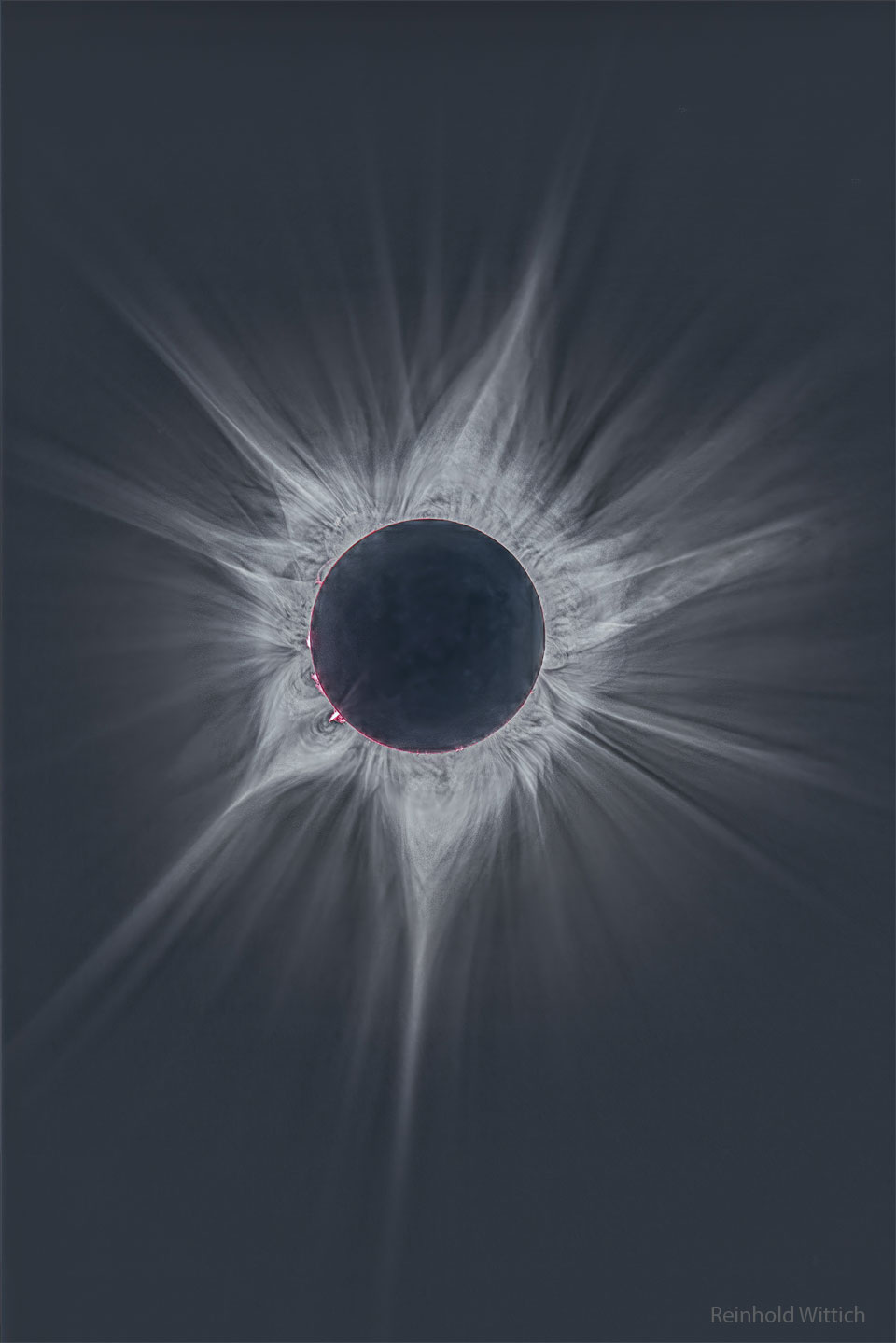2023 May 24
Image Credit & Copyright: Rick Whitacre; Text: Natalia Lewandowska (SUNY Oswego)
Explanation: Sometimes we witness the Moon moving directly in front of -- called occulting -- one of the planets in our Solar System. Earlier this month that planet was Jupiter. Captured here was the moment when Jupiter re-appeared from behind the surface of our Moon. The Moon was in its third quarter, two days before the dark New Moon. Now, our Moon is continuously half lit by the Sun, but when in its third quarter, relatively little of that half can be seen from the Earth. Pictured, the Moon itself was aligned behind the famous Lick Observatory in California, USA, on the summit of Mount Hamilton. Coincidentally, Lick enabled the discovery of a moon of Jupiter: Amalthea, the last visually detected moon of Jupiter after Galileo's observations.
